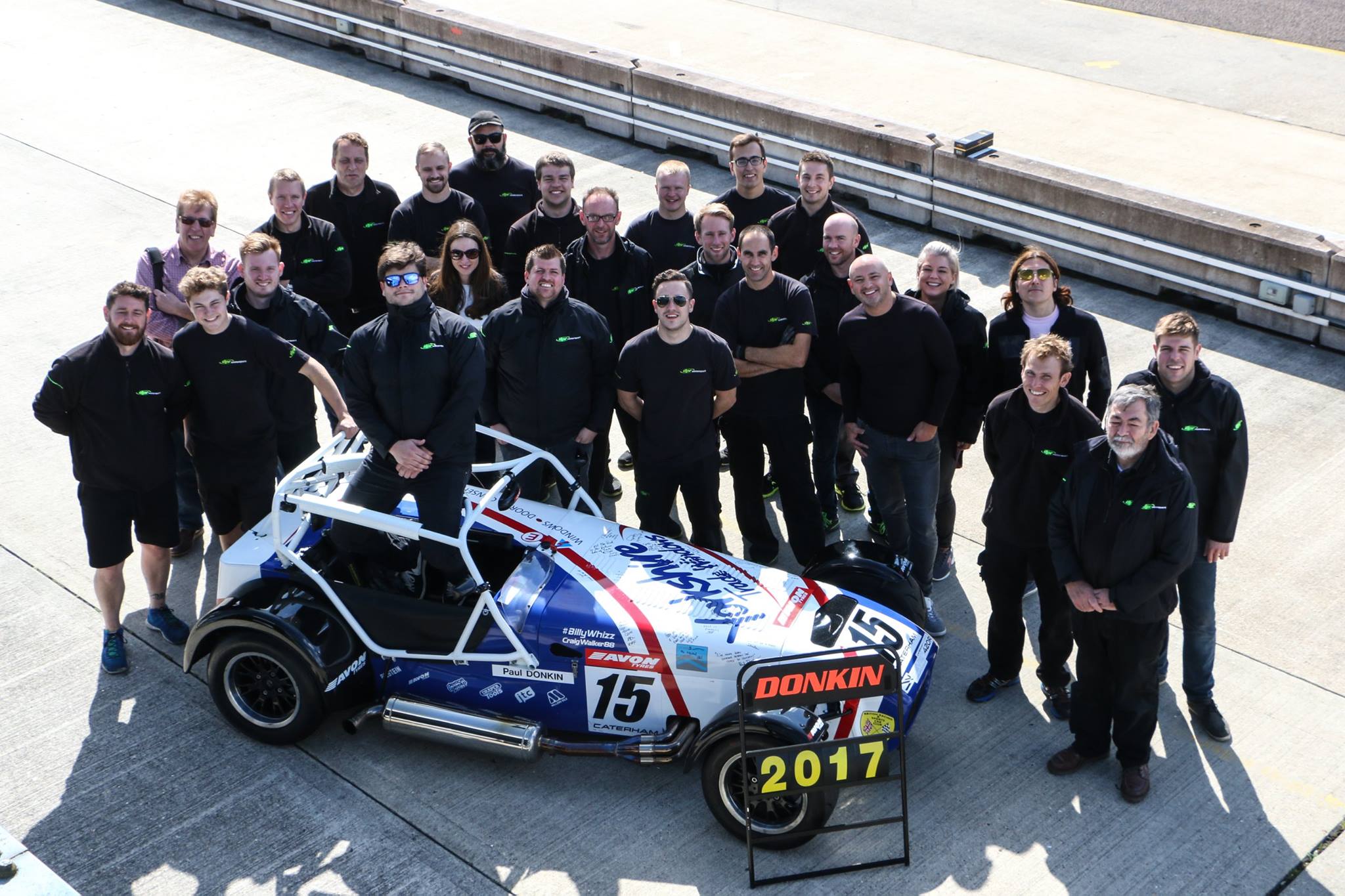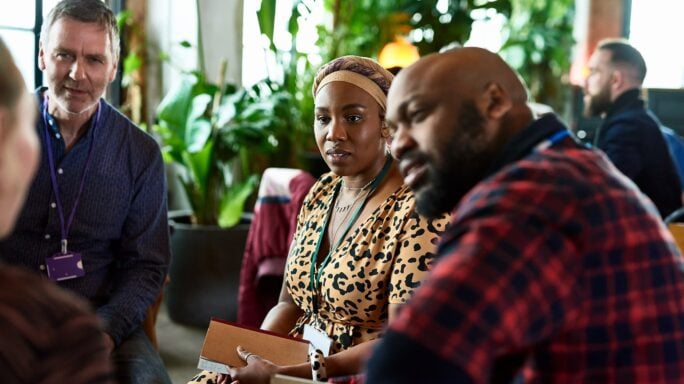DPR Motorsport: ‘We’ve stalled due to coronavirus, but we’re preparing to get back on track’

In our Your Story series, we speak to business owners about the challenges they’re facing and the steps they’re taking to overcome them. Derrick Rowe, the CFO of DPR Motorsport, talks about how his business is dealing with the coronavirus (COVID-19) disruption and offers advice that could help your company.
Modern-day Formula One racing is all about vehicle superiority – high powered, massively engineered vehicles that require huge budgets to race and enter the sport.
Caterham sports cars are built for a much more direct experience of racing. It’s the talent and skill of the driver that determines how successful his or her race is rather than the amount of budget spent by the team or driver.
Similarly, it’s grit, creativity and innovation that business owners like me and you have to rely upon during coronavirus in order to navigate the obstacle-strewn road ahead.
DPR Motorsport is our Surrey-based business. We build, prepare and maintain Caterham sports cars for the official Caterham racing series, which was due to start in April but came to a stop with the lockdown as from March of this year.
We work with the vehicles before they go out on the track, with added support from our staff at race weekends, which can attract up to 150 competitors and some 500 or 600 Caterham sports cars racing regularly across the UK and Europe.
This racing is the source of our business from on-track support at the main UK race circuits and in our workshop, where we also service Caterham sports cars used on the road.
Thankfully, we are finding new ways to fuel the difficult journey ahead.

Establish a new business plan and work out fixed costs
It was clear that coronavirus was going to be a problem by the second week of March, with a shutdown of most businesses becoming inevitable.
The workshop and track work that DPR Motorsport does with Caterham sports cars is in direct conflict with the social distancing rules and is an impossibility for home working.
DPR Motorsport went into planning mode towards the end of that week, and on 23 March, we went into furlough and mothballed the whole of our operation.
The immediate action was to understand what this meant for the business financially; the company needed to establish a business plan quickly.
“Keeping our staff employed is key to the restart given the specific skills they have built up”
The first thing was to determine our fixed costs and make sure that we reduced these to a minimum.
The other key aspect was to understand our cash flow, so we could communicate this to the bank to ensure that any funding support would be available when required.
We’ve taken full advantage of government support, which allows us to pay furloughed employees 80% of their wages via the Job Retention Scheme, up to a monthly cap of £2,500.
Keeping our staff employed is key to the restart given the specific skills they have built up. The furlough scheme has provided vital support to offset our highest cost.
We were also entitled to government grants because we own premises and pay business rates. The bottom line is we can survive for some time until we need to look at something a bit more drastic.
Once we’d laid some groundwork and caught our breath, we’ve tentatively started to look at the future.
Job Retention Scheme module
We've created a module and step-by-step guides so you can do what's required to make a claim under this scheme.

Make critical decisions about employee outputs for a successful restart
The problem we and all businesses face is that it’s relatively easy to put the brakes on so that everything stops dead.
However, there is significant risk in restarting a business, as there can be substantial startup costs in advance of any customer income.
That’s the problem – trying to manage that startup phase, so costs don’t outstrip our income to the extent that we run of cash.
But by looking at the staffing mix against their overall contribution, we’ve got a good idea for the first time of what our operating costs per hour are versus income generated.
These will be essential metrics to ensure costs do not exceed income during the initial restart.
Our systems record the invoice generation per employee for the work they do in the workshop, as jobs have specific times recorded against the relevant employee.
We know our income generation per employee, down to an hourly basis.
Before coronavirus, we based our profit monitoring on our activity both in the workshop and at circuits. For the restart, ensuring the workshop activity is cash generating from the off will be all-important.
We’ll be looking very hard at what each employee generates in terms of income and based on work booked to make decisions as to how many employees we need each day.
That analysis is something we’ve never done before but is going to be an essential part of the restart.

Evaluate data to support hard business decisions
This period of restrictions has given us a chance to take a long hard look at how DPR Motorsport is operating from a financial point of view, and creating financial models to inform our understanding of how the restart should be best approached.
Like many businesses, we’ve used the data in our systems to look at employee contributions in a very broad sense from a performance view perspective. We didn’t before look at data in terms of: “Well, how many guys can we afford to employ daily?”
This is an entirely different way of doing things.
It may well mean that we’ll have to switch to some form of zero-hours contract, because in the future it’s just going to be impossible for us to commit to employing somebody for a month if we don’t know that there’s a month’s worth of work for them.
There are some early indications that the furlough scheme may be modified to allow a mix of furlough and employed working.
If introduced, this would bring a significant benefit to us and all employers faced with a phased restart.
It’s wise to seek legal advice when exploring options to impose a new flexible working arrangement with employees, to ensure any changes are ethical, legal and understood by both parties.
Reflect on innovative contingencies – could you do things differently?
We have solar panels on the roof of our workshop, and so we’re actually positive on electricity. In other words, we’re getting more money back in electricity from the roof than we are actually paying out for.
Green decisions can often equate to long-term self-sufficiency and financial freedom, if you are in a position to invest in the short term.
“Don’t be afraid to explore new avenues and dare to dream and think positively about the future”
There will be a reshaping of how businesses operate, and there will be opportunities to look at new areas to get involved in – and that’s something we’re also thinking about.
Of course, what happens next is dependent on how we restart. But when any opportunities open up, that’s when funding could come in useful.
Don’t be afraid to explore new avenues and dare to dream and think positively about the future.
For us, we are looking at whether racing resumes this year, or whether all racing on track is deferred until 2021, which is a distinct possibility.
Hopefully, people’s ability to go out on the track in their cars will come sooner than the racing does, and we want to be ready for them.
My top takeaways
Here’s what’s worked best for our business.
1. Take advantage of any government benefits
Some companies will, unfortunately, miss out. But if you can, take advantage of government help and minimise fixed costs.
Strip your company right down and get stuck into planning for the future while it’s in hibernation.
2. Take care of your staff
Firstly, use government furlough opportunities to protect employees. Secondly, if you have to consider productivity data to scrutinise staffing costs and efficiencies, ensure you are as transparent and supportive as possible.
And protect yourself legally if you’re considering changes to staff employment contracts.
3. Accept your business might need to change
Visualise when the company could realistically restart and project the restart costs you may have. Model different scenarios and look at how you will cover those costs until revenue starts coming in again.
There may be new avenues you can explore to get cash flow going. This is the time to think hard about diversifying your income streams.
Derrick Rowe was talking to Sage Advice’s Asavin Wattanajantra.
Want to share Your Story?
If you'd like to tell your business story on Sage Advice and share how you've overcome challenges, send us your details to learn more.






